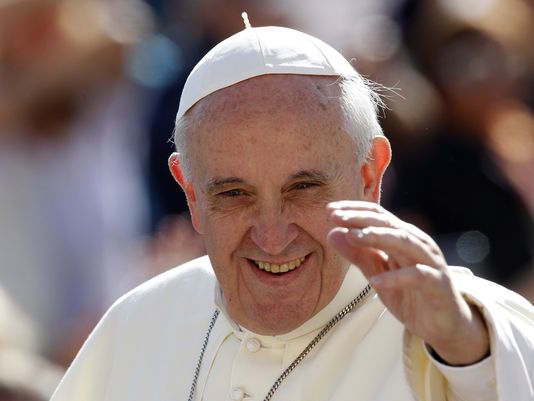In New Interview, Francis Takes Aim at "Vatican-centric" View
John Thavis
“Heads of the Church have often been narcissists, flattered and thrilled by their courtiers. The court is the leprosy of the papacy.” Once again, Pope Francis has delivered a dose of candor, on topics ranging from reform of the Vatican bureaucracy to his favorite saints. And once again, he’s done it by going outside the usual (filtered) Vatican channels of communication – in this case, in a conversation with an Italian newspaper editor who happens to be a nonbeliever. The remark about the papal “court” will deservedly make headlines. It should be noted that Francis was not impugning the entire Roman Curia, which he said has another defect: “It is Vatican-centric. It sees and looks after the interests of the Vatican, which are still, for the most part, temporal interests.” “This Vatican-centric view neglects the world around us. I do not share this view and I'll do everything I can to change it. The Church is or should go back to being a community of God's people, and priests, pastors and bishops who have the care of souls, are at the service of the people of God,” he said. There were several other striking comments in this latest chapter of The Real Francis: -- The church’s evangelization must be carried out through dialogue, not proselytism, which the pope called “solemn nonsense.” This is a man unafraid of putting Christian beliefs out for critical discussion, convinced that “to get to know people, listen, expand the circle of ideas” is part of a process that will attract people and ultimately lead toward “the Good.” -- The church’s credibility rests in its ability to listen to the people, and understand their “needs, desires and disappointments, despair, hope.” “We must restore hope to young people, help the old, be open to the future, spread love. Be poor among the poor. We need to include the excluded and preach peace,” he said. -- The pope made it clear that the Second Vatican Council is his road map – and he recognizes that 50 years after Vatican II, not enough has been done to implement its call for dialogue. “Vatican II, inspired by Pope Paul VI and John, decided to look to the future with a modern spirit and to be open to modern culture. The Council Fathers knew that being open to modern culture meant religious ecumenism and dialogue with non-believers. But afterwards very little was done in that direction. I have the humility and ambition to want to do something.” -- As on previous occasions, Francis dropped some strong hints that he will govern in a less authoritative and more collaborative way, using synods of bishops to share governing authority. His appointment of an advisory group of eight cardinals was a step in that direction, he said. “This is the beginning of a Church with an organization that is not just top-down but also horizontal. When Cardinal Martini talked about focusing on the councils and synods he knew how long and difficult it would be to go in that direction. Gently, but firmly and tenaciously.” -- Saint Francis of Assisi, whose birthplace the pope will visit later this week, will be his model. “(Saint Francis) dreamed of a poor Church that would take care of others, receive material aid and use it to support others, with no concern for itself. Eight hundred years have passed since then and times have changed, but the ideal of a missionary, poor Church is still more than valid. This is still the Church that Jesus and his disciples preached about.” -- The pope revealed that he meditated deeply before accepting the papacy, asking the cardinals if he could spend a few minutes in the room next to the balcony that overlooked St. Peter’s Square, where tens of thousands were waiting. “My head was completely empty and I was seized by a great anxiety. To make it go way and relax I closed my eyes and made every thought disappear, even the thought of refusing to accept the position, as the liturgical procedure allows. I closed my eyes and I no longer had any anxiety or emotion. At a certain point I was filled with a great light. It lasted a moment, but to me it seemed very long. Then the light faded, I got up suddenly and walked into the room where the cardinals were waiting and the table on which was the act of acceptance. I signed it, the Cardinal Camerlengo countersigned it and then on the balcony there was the ‘Habemus Papam.’” -- Finally, in beginning a face-to-face dialogue with Eugenio Scalfari, the founder of the Rome newspaper La Repubblica, the pope made it clear that he was not simply conducting an intellectual exercise with one of Italy’s best-known atheists. In his own gentle way, he reached out to Scalfari, probing the journalist’s beliefs and asking him at one point: “Do you think we are very far apart?” The two will no doubt meet again. I think the pope will continue to conduct this very public conversation with the idea of inspiring similar bridge-building efforts throughout the church.
|
.
Any original material on these pages is copyright © BishopAccountability.org 2004. Reproduce freely with attribution.
